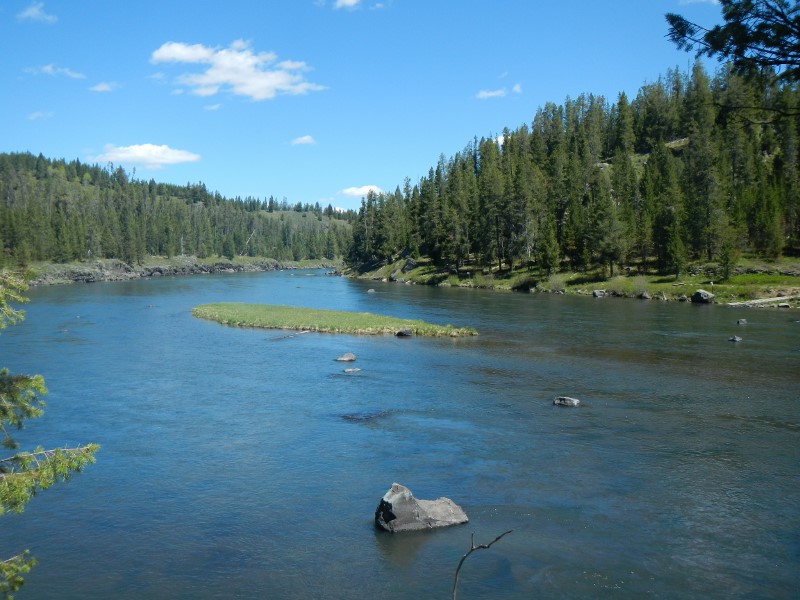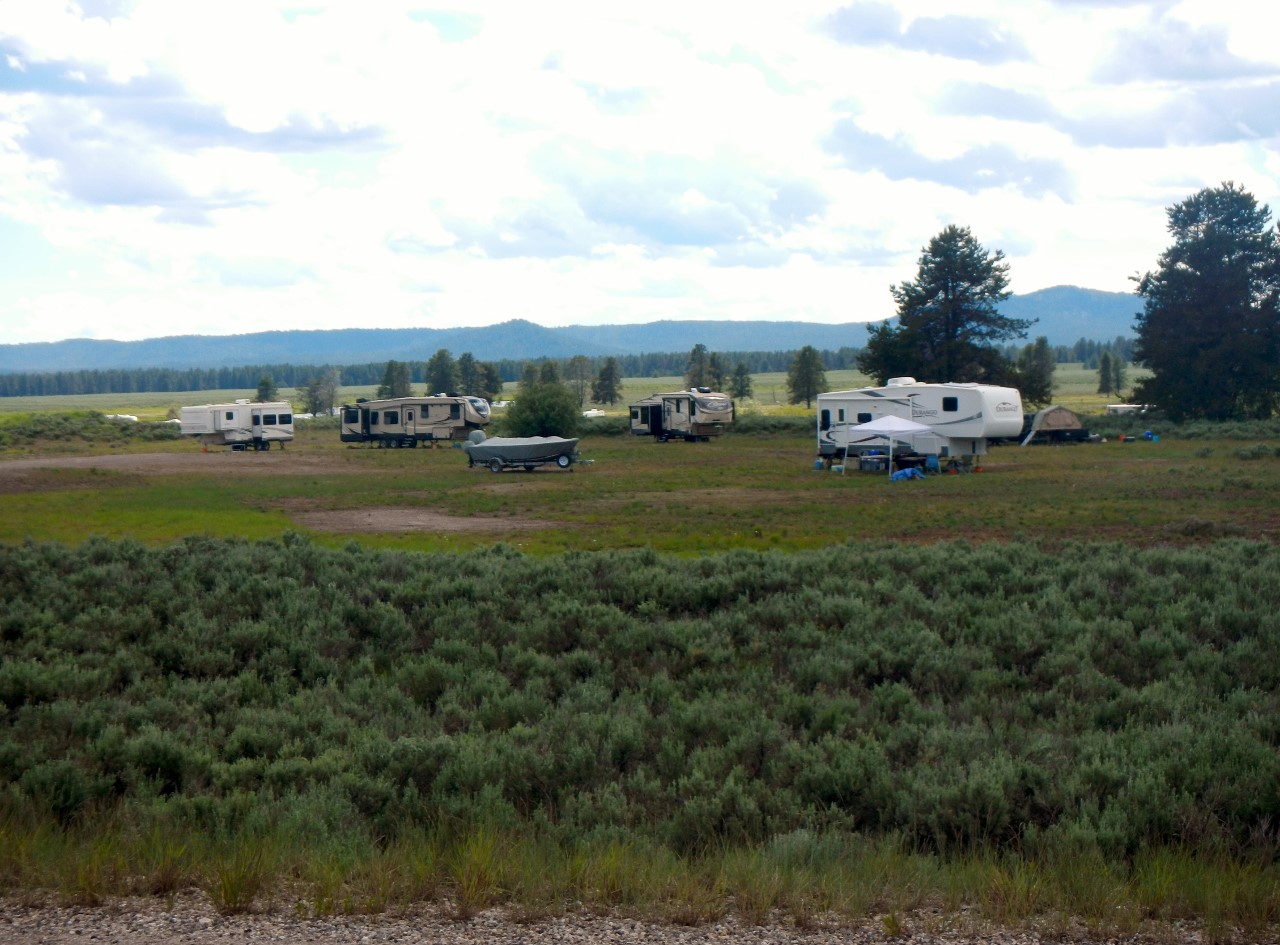
Looks like the big stoneflies will be laying low until Memorial Day itself. In fact, a lot of insects ( excepting midges and BWOs) will be doing the same because of snow showers coming and going likely for the next few days. When weather warms up, as predicted for Monday, there will be a lot of fly fishers wading and boating on the river from lower Cardiac Canyon downstream to Chester. So here are a few locations to try where a minimum of fishing company will be present.
Bear Gulch requires walking from the old ski area parking lot, no quite a mile, to the river. Some of the thickest and earliest giant and golden stone fly hatches on the entire river happen here, and hard sided boats of any kind are very rare because the slide access below Lower Mesa Falls is prohibited to such. Expect to see some rafts passing through. Allow a few days of warm weather and other great boat- free and minimum wader locations will see the big stoneflies become active. First is above the river in Mesa Falls State Park. Walk upstream above the Park, and fish some great boat-free water. Another is the river above the signed West Hatchery Ford road going off Highway 20.. This side of the river is almost free of boats and not many wading anglers. The reason is that the boat take-out location is on the more popular east side of the river and closed to boating beginning right below. Walk upstream on an old game trail for a while to get above the cliffs and fish as long as time permits. Another walk-in only location is around Sheep Falls. The road to this area is sign and just downstream from the West Hatchery Ford Road.
As the hatch moves upstream, we will keep track of its progress. With warming weather and sufficient time, such as Box Canyon and Coffee Pot will feature their share of active big stone flies. By then choosing a great location almost anywhere on the Henry’s Fork will become more complicated as other great insect hatches will begin!
Some Details From Dr. Rob Van Kirk’s SWE Report for the Henry’s Fork Drainage Filed Yesterday, May 22nd.
Mean temperature yesterday was 8 degrees F below average, and precipitation was recorded at only one station. That kept snowmelt rates low and water-year total precipitation at 99% of average. Net change in snow water equivalent (SWE) was 0.2 inches of melt, compared with 0.5 inches on average. Remaining SWE is 53% of this year’s peak, compared with 57% on average, and current SWE is in the 45th percentile for the date.
Weather forecasts call for continued below-average temperatures through Sunday, with precipitation possible every day. Mid-elevation snow will continue to melt as it did yesterday at slightly below-average rates. High elevations will likely gain new snow today and tomorrow. Long-term outlooks call for very warm and dry conditions starting early next week and continuing for the foreseeable future. That will accelerate snowmelt at all elevations.
Water Quality
Water quality improved again yesterday, as turbidity continued to drop at all locations except immediately downstream of Island Park Dam. Dissolved oxygen concentrations are above average in all river reaches, and water temperatures were within the optimal range for rainbow trout egg and fry development watershed-wide. Hatch timing is within 1–2 days of average at all locations and will slow by a day or so over the next few days.
Rob Van Kirk, Ph.D.
Science and Technology Director
Henry’s Fork Foundation
P.O. Box 550
Ashton, ID 83420
208-881-3407 CEL




